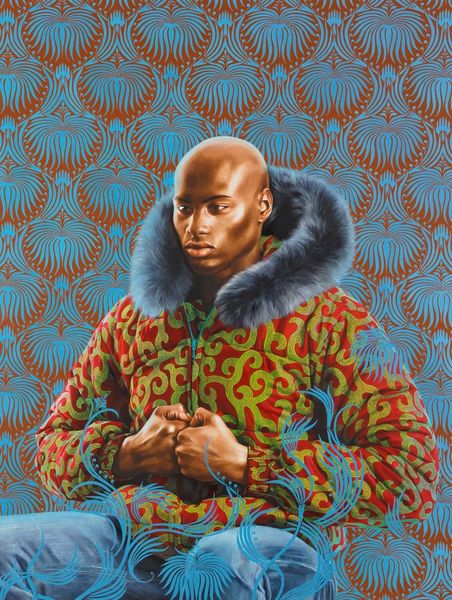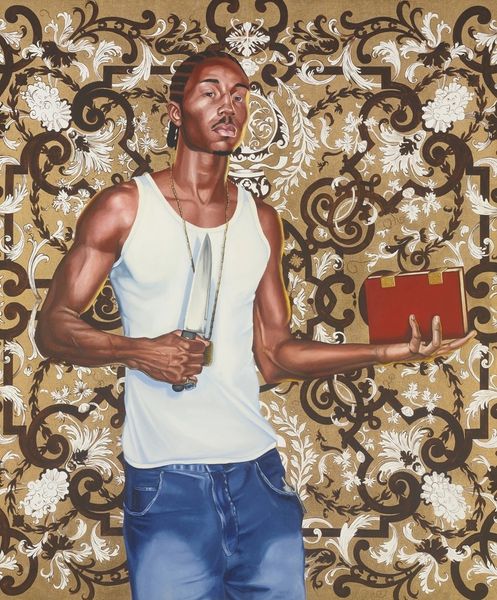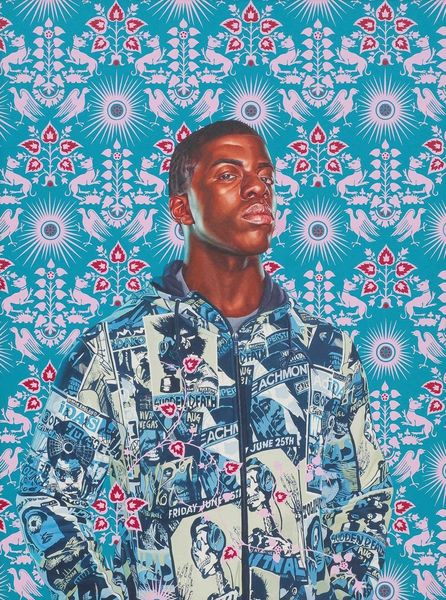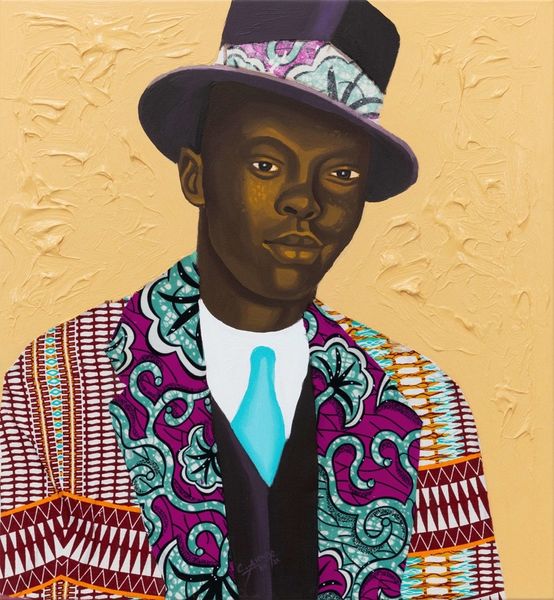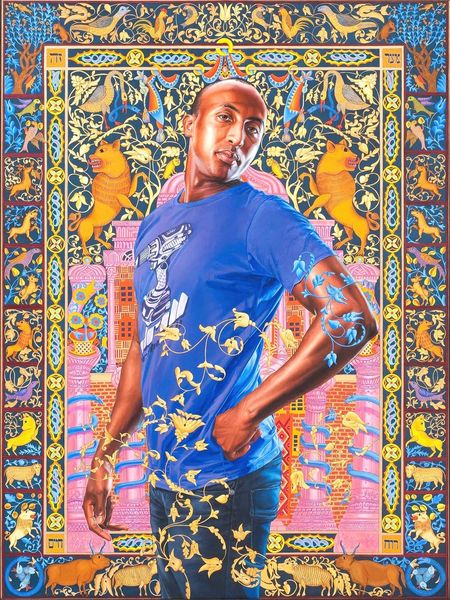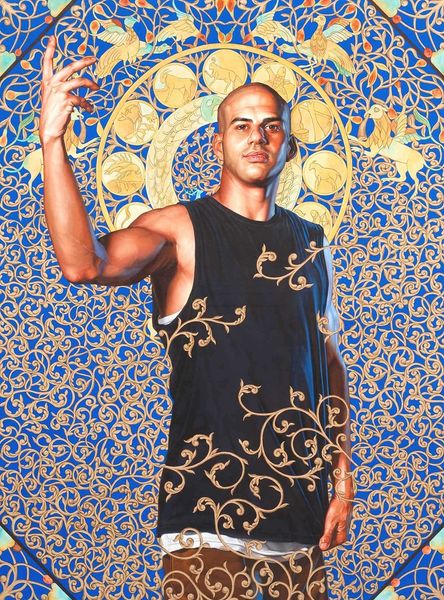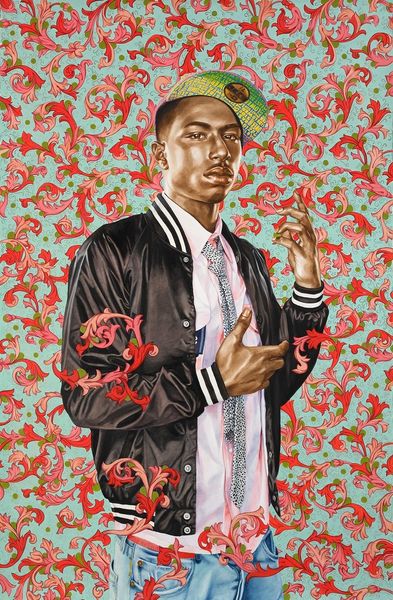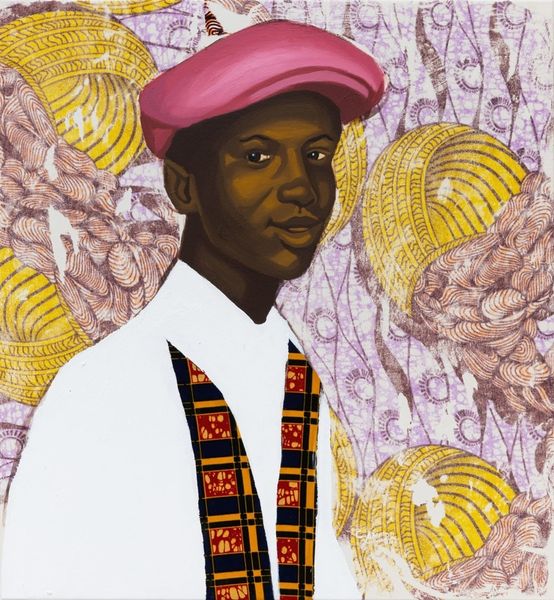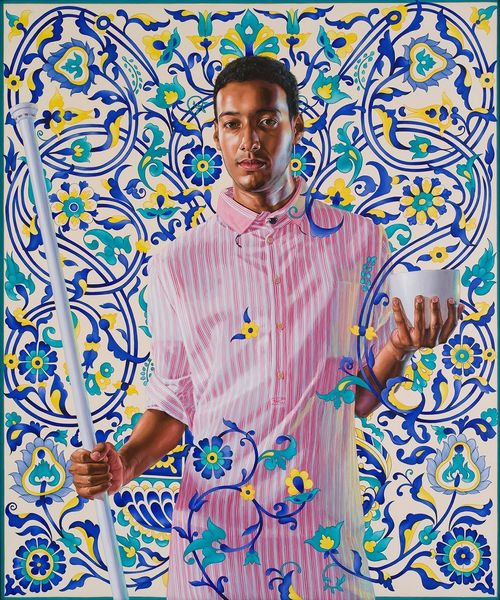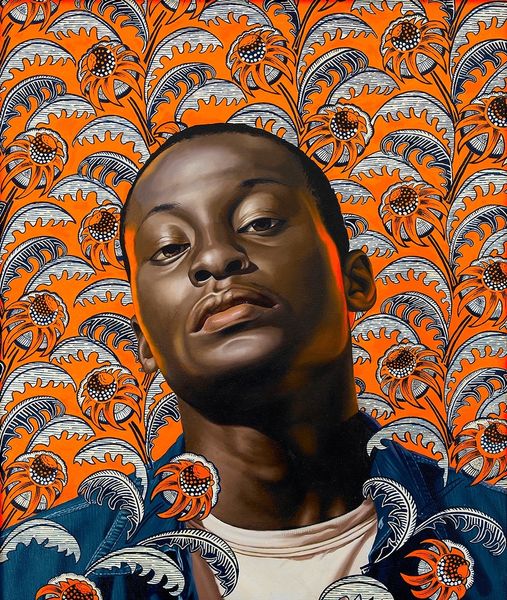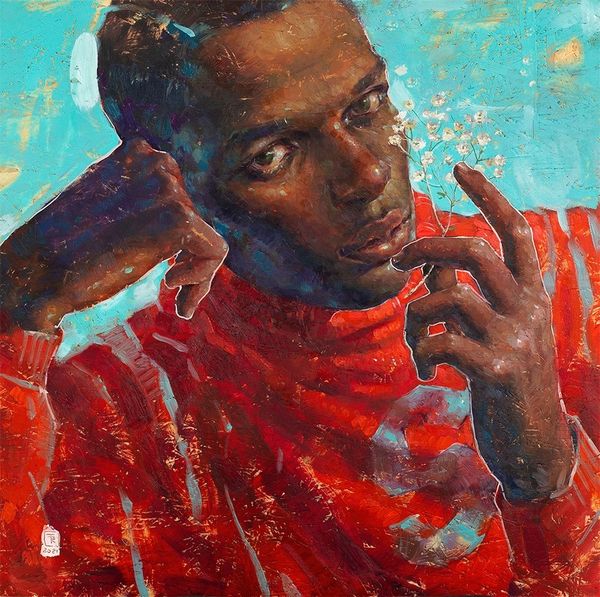
painting, oil-paint
#
portrait
#
pattern-and-decoration
#
figurative
#
contemporary
#
painting
#
oil-paint
#
afrofuturism
#
figuration
#
portrait art
Copyright: Modern Artists: Artvee
Curator: This is Kehinde Wiley’s "Solomon Mashash II" created in 2011. It’s an oil on canvas painting. My initial impression is of ornate regality undercut with the everyday—a juxtaposition that is immediately intriguing. What do you make of it? Editor: It sings! That yellow t-shirt, emblazoned with leaping cheetahs—it vibrates against that background, almost a sacred, geometric space. It makes me think about street style as a form of personal heraldry. There’s a quiet defiance in it. Curator: Exactly! Wiley frequently sources his models from the streets and then situates them in poses derived from historical portraits of powerful figures. Note the wallpaper-like background; it's not mere decoration. There is labor embedded into this detail, how it mimics traditionally feminine or domestic design now acting as a mode of high end artifice and framing for this sitter. Editor: I see what you mean. It challenges those traditional lines, forcing us to reconsider our expectations of portraiture and who gets to be depicted in this grand style. But for all that it may critique, it certainly loves paint, its surfaces are luxuriant, the skin tones glowing. And that gold! It screams Baroque splendor repurposed. It's like Wiley’s saying, “Black is beautiful, black is regal.” Curator: Agreed. And what about that T-shirt? What does that commercial inscription signal about global style? Considering also that those backgrounds are computer generated. Wiley works with a team, outsourcing the more decorative sections after his initial work. Editor: The cheetahs and ‘Wild World’ bring it back down to earth. It's like, ‘I’m Solomon, and yeah, I like a graphic tee, so what?’ The gesture is confident. Curator: So how would you see Wiley addressing audiences through material like that T-shirt then? Do you see his labor, or that of those involved with the production of those designs in conversation in pieces like this? Editor: Maybe he’s whispering, "even kings have their comfort clothes, their everyday armor," which forges connections between Solomon, us, and that distant lineage of power. Curator: Ultimately, it seems the power rests in those gorgeous details that are never quite everyday to everyone. I admire the depth Wiley brings to that subject so effectively here. Editor: For me, it's that electric charge – seeing someone centered who typically wouldn't be in art history and feeling the shift of the world for a moment. It really sticks with you.
Comments
No comments
Be the first to comment and join the conversation on the ultimate creative platform.
